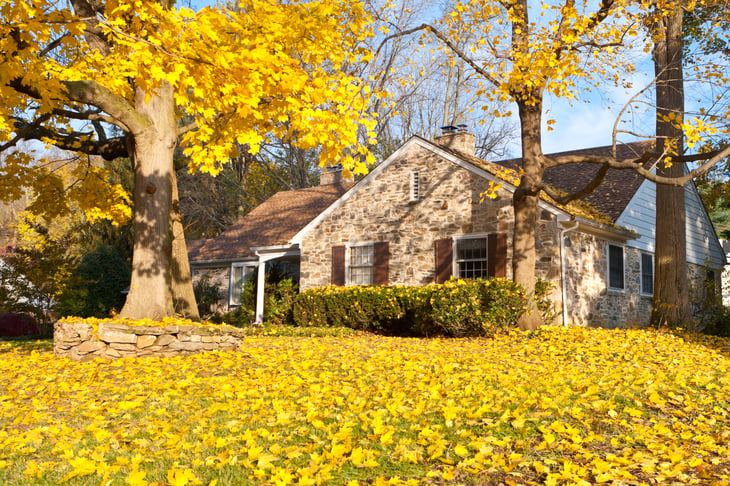
Editor's Note: This story originally appeared on Point2.
Trees can make a fantastic addition to your yard. Not only do they provide shade and an element of beauty, but they can also create an incredible habitat for the local wildlife.
The right trees can attract a wealth of birdlife, pollinators, and much more, bringing diversity to your outdoor space.
However, not all trees are so beneficial. In fact, several species can damage your yard and play havoc with the local ecosystem. But knowing right from wrong regarding can be tricky.
So, with that in mind, here are trees that can ruin your yard and should be avoided.
1. Ginkgo Trees
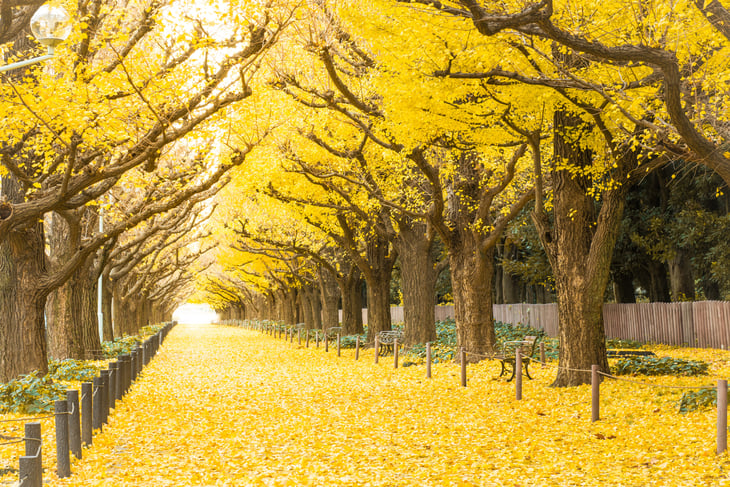
Also known as Maidenhair Trees, Ginkgos are among the oldest trees on the planet. Native to China, these ancient wonders are beautiful to behold, and they’re incredibly resilient to pests and diseases.
However, while the tree itself is stunning, it’s the fruit that causes problems — containing butyric acid, found in vomit and animal fat, when the Ginkgo fruit drops to the ground, this horrendous odor is released.
As you can imagine, this doesn’t create a fantastic experience for you or your neighbors.
There is some good news, however. Only the female trees produce the foul-smelling fruit. So, by choosing a male tree, you can enjoy all the beauty of a Ginkgo tree without any of the downsides.
2. Bradford Pear
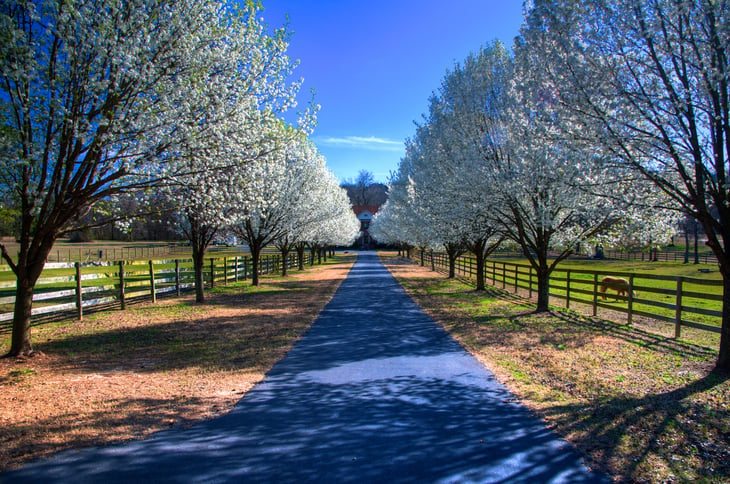
Boasting stunning blooms in spring and eye-catching red leaves in fall, the Bradford Pear is another beautiful-looking tree that hides a dark side.
As pretty as the blossoms look, their smell could leave you and your neighbors gagging. Reminiscent of rotting fish, your Bradford Pear blooms will be the talk of the neighborhood for all the wrong reasons.
On top of that, Bradford Pear trees have very brittle branches. Strong winds, storms, or even heavy snowfall will leave branches strewn across your yard, making it difficult to mow.
3. Mulberry Trees
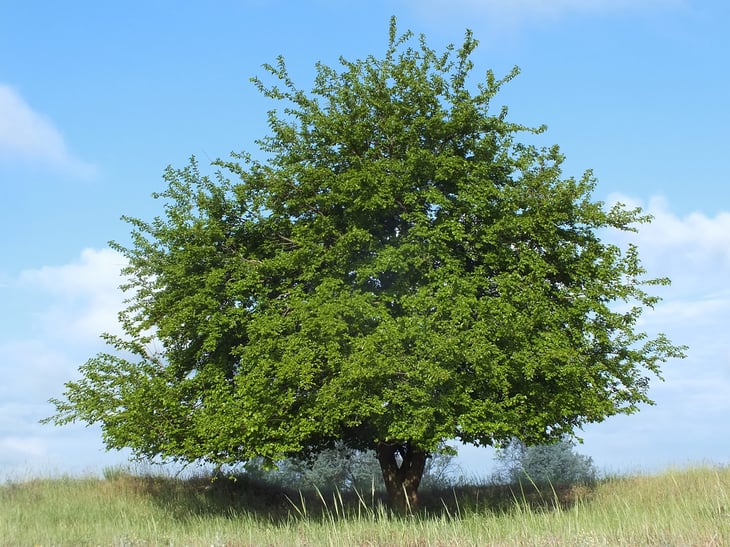
While Mulberry trees are a fantastic choice for those looking to attract birds and insects to their yards, you might want to think again. The fruits are incredibly messy and will stain anything they touch.
This can be particularly noticeable on patios, sidewalks, and other paved areas, and you can also easily tread them throughout your home. The stubborn stains will take a lot of elbow grease to remove.
On top of that, Mulberry trees produce vast amounts of pollen in the springtime, triggering allergies.
Finally, the roots grow extremely quickly and aggressively and have been known to lift paving slabs when planted too close to sidewalks, driveways or patios.
4. Silver Maple
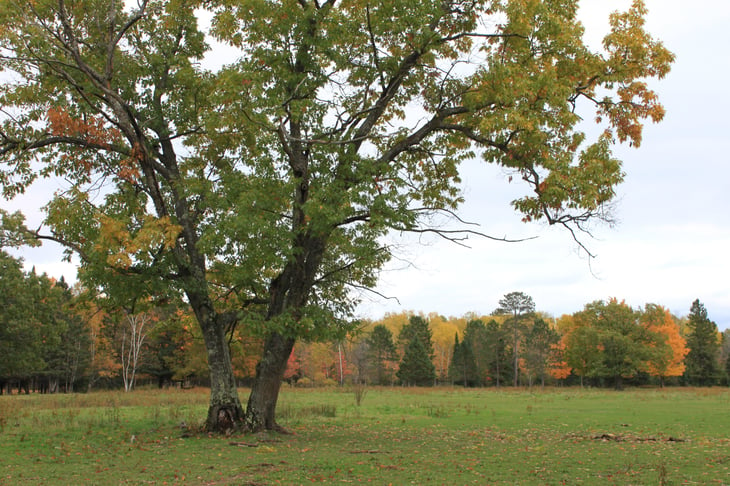
There’s a lot to love about Silver Maple. From its fast growth to its beautiful appearance, it’s also low maintenance. However, that doesn’t necessarily mean it’s the best choice for your yard.
Silver Maple wood is rather fragile, and its brittle branches are highly vulnerable to storms, strong winds and heavy snow.
It really doesn’t take much to scatter branches and twigs across your yard, and in the worst-case scenario, larger branches can cause damage to your or your neighbor’s property when they snap.
While the branches may be brittle, the roots are very strong. They quickly spread and can take over a yard in no time, cracking pavements and, in some cases, can damage the foundations of your home.
5. Black Walnut
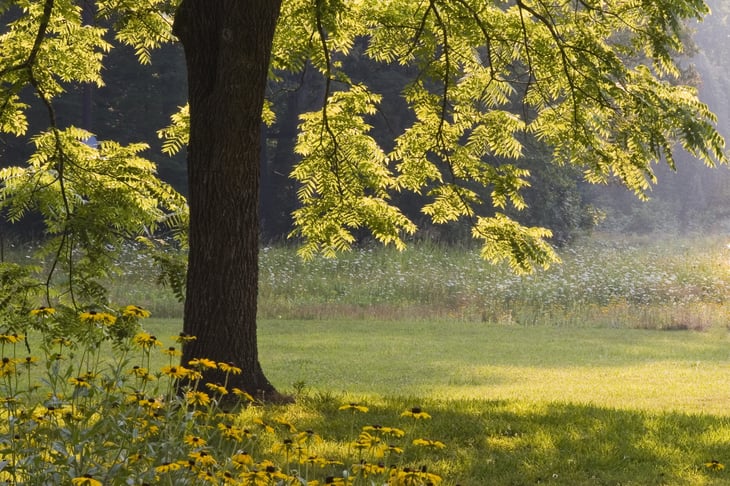
You may be tempted to grow a Black Walnut tree to enjoy the delicious nuts. However, the tree itself is a truly selfish survivalist.
Have you ever noticed that you rarely see anything growing beneath a Black Walnut tree?
The roots of a Black Walnut tree produce an organic compound known as juglone. This seeps into the soil, preventing other plants from growing in the area and allowing the Black Walnut to take all the available nutrients.
On top of that, once the fruits drop, they can be difficult to clear from your yard. The outer flesh stains skin, concrete, natural stone, and wood alike, and can be challenging to remove.
6. Eastern Cottonwood
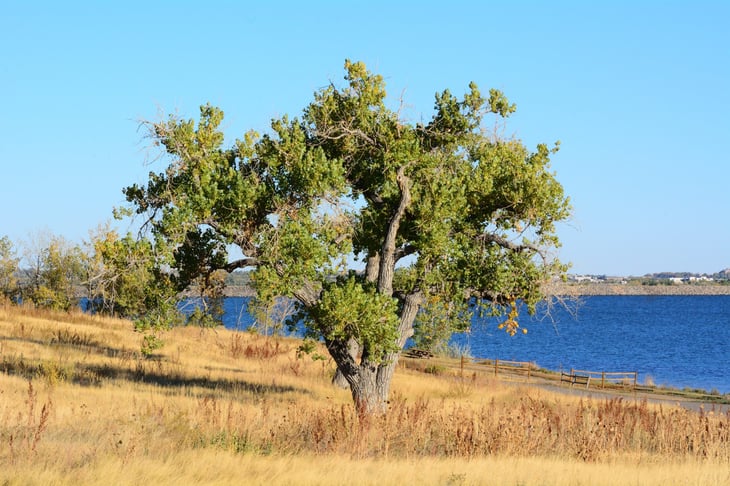
While Cottonwood may look majestic and boasts low maintenance, homeowners should think twice before planting one in their yard.
The root system of an Eastern Cottonwood is particularly shallow and highly susceptible to rot. This makes it a disaster waiting to happen, as a strong wind or storm could quite easily topple the tree, potentially damaging your property as it crashes down.
Beyond the risk of falling, Cottonwoods produce whispy, cotton-like seeds that spread far and wide across the neighborhood, creating a lot of mess.
7. Silver Poplar
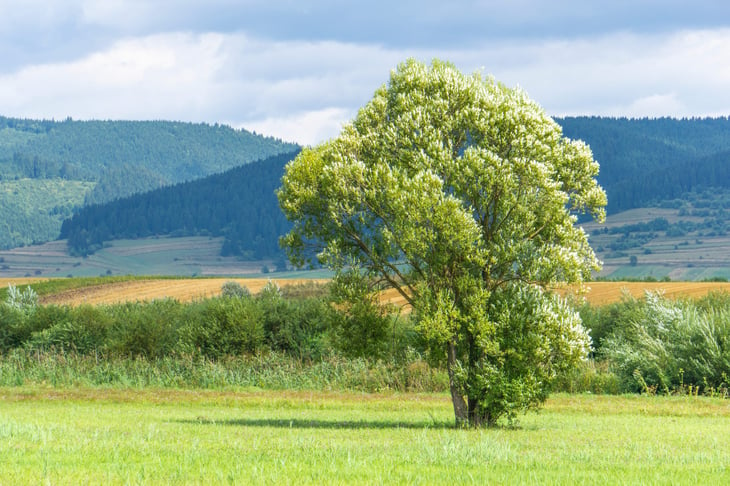
Silver Poplars were once trendy ornamental trees. However, they’ve fallen out of favor with many homeowners due to the brittle wood that will soon see your yard strewn with branches and twigs after strong winds.
Not only that, but the Silver Poplar is also extremely invasive. It reproduces clonally from root shoots, similar to running bamboo, meaning saplings will soon be cropping up everywhere.
8. Persian Silk Tree (Mimosa)
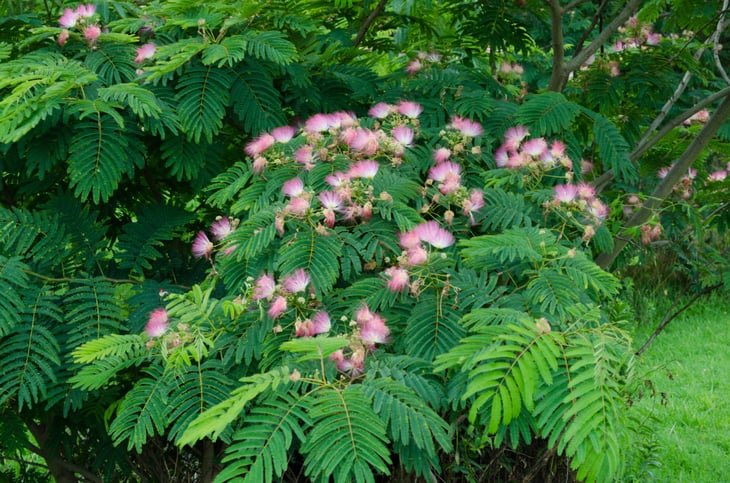
The gorgeous pink flowers of the Persian Silk tree can bring a welcome splash of color to your yard in spring. But these are short-lived, and soon, you’ll notice that once the flowers have wilted, the seeds will be dropped all over the place.
Highly invasive, it sends out thousands of seeds to ensure future growth and will even sprout after it’s been cut down.
On top of that, like the Black Walnut, it produces biochemicals that prevent other plants from growing.
One final reason to avoid Mimosas is that the soft wood makes them a high risk during storms.
9. Weeping Willow
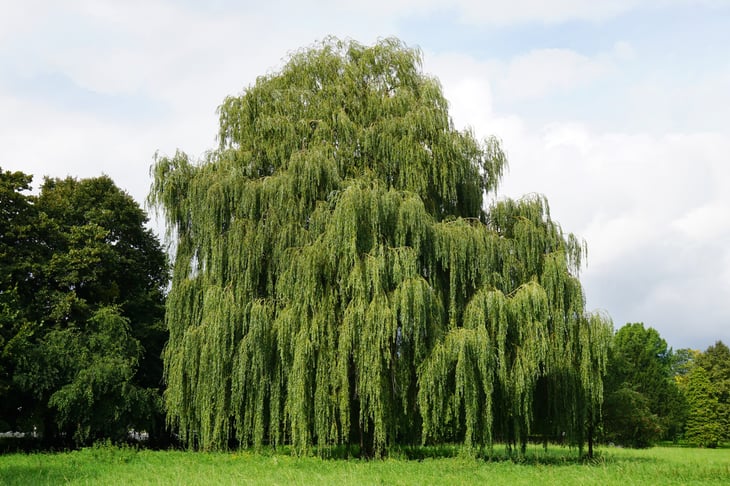
Willows look gorgeous with their swaying canopies and elegant trunks. But, typically found growing on river banks, they’re one of the thirstiest trees you can plant.
Their deep roots spread far and wide in search of water and will soon drain your yard dry, depriving other plants of essential nutrients.
Not only that, but they can also cause severe damage to sewer pipes and other underground utilities as they dig deep in search of water. Willows also grow fast and can soon take over your yard.
10. Russian Olive
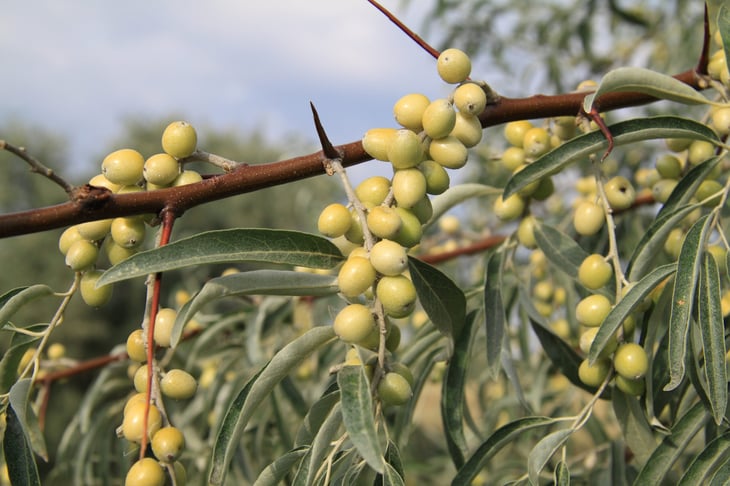
This ornamental species may look nice, but it’s a beast when it comes to damaging your yard and the surrounding environment.
Highly resilient and super invasive, it’s actually illegal to sell Russian Olive trees in some U.S. states. Even after chopping it down, it can come back with a vengeance.
11. Norway Maple
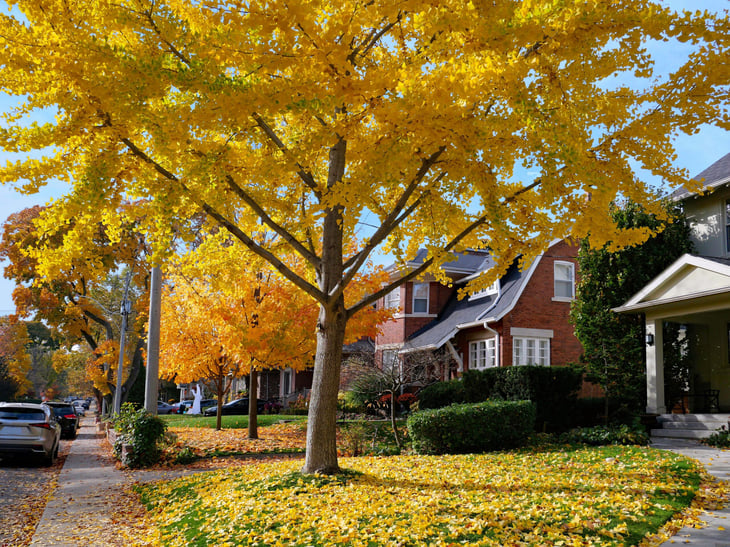
There’s no doubt that when fall comes, maples are a gorgeous addition to your yard, with their bright leaves adding pops of color to your curb appeal.
However, the Norway Maple is one to avoid at all costs. Greedy and invasive, it’ll soon drain your yard of nutrients and water, preventing other plants from growing.
On top of that, you can expect those pretty leaves to make a lot of mess once they fall, along with the winged fruit “helicopters” that can soon take over your garden.
12. Empress Tree
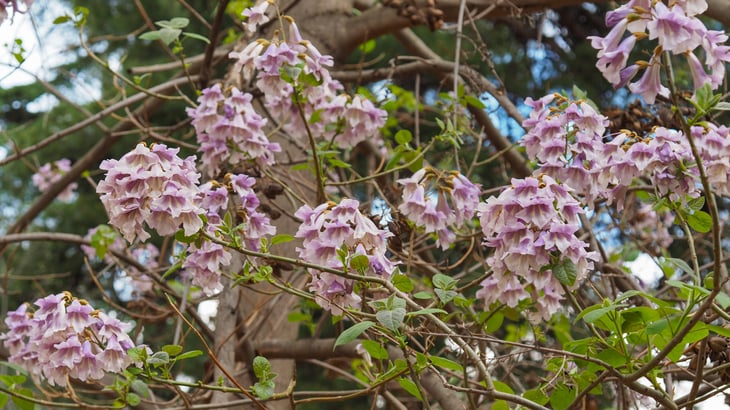
While its lush, purple flowers make the Empress Tree a popular choice, it’s a terrible idea to plant one in your yard.
It’s an aggressively invasive species already responsible for destroying native ecosystems across the U.S. and Canada.
It grows extremely fast, and once the seeds have sprouted, the saplings are challenging to remove. As a result, you’ll soon find that they have taken over your yard and the surrounding area.
13. Sumac
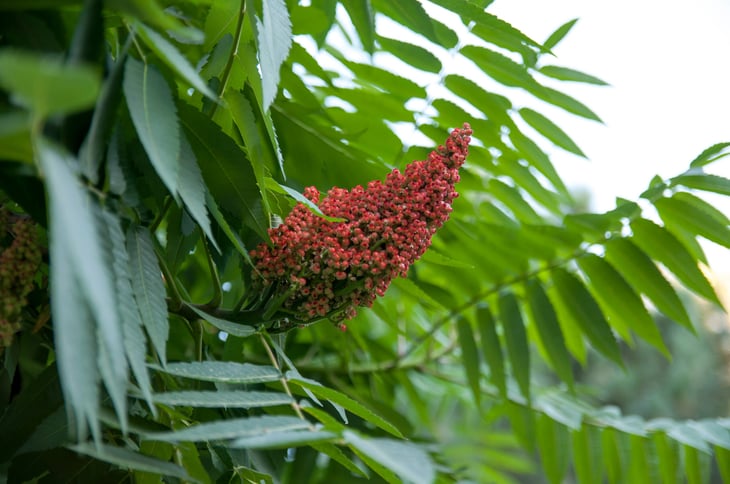
Sumac is particularly popular for its edible berries and stunning fall foliage. However, be careful when acquiring one as it’s easily mistaken for Poison Sumac, which can cause terrible skin rashes.
Even if you do find the edible variety, you’ll need to dedicate a lot of time to picking the berries. Otherwise, they’ll soon make a big mess in your yard.
14. Oak
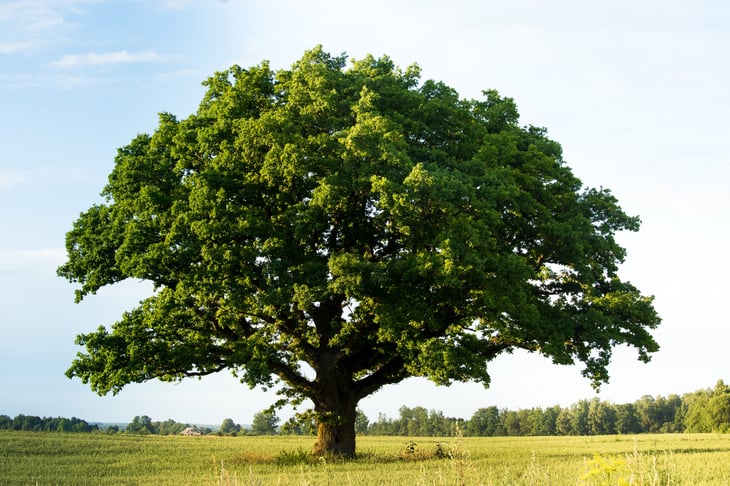
Undoubtedly, oak trees are majestic, but they don’t do well in suburbia. They grow enormous and can damage overhead powerlines and quickly encroach on your boundaries.
Meanwhile, they have a wide, shallow root system that can easily damage pavements and foundations.
15. Siberian Elm
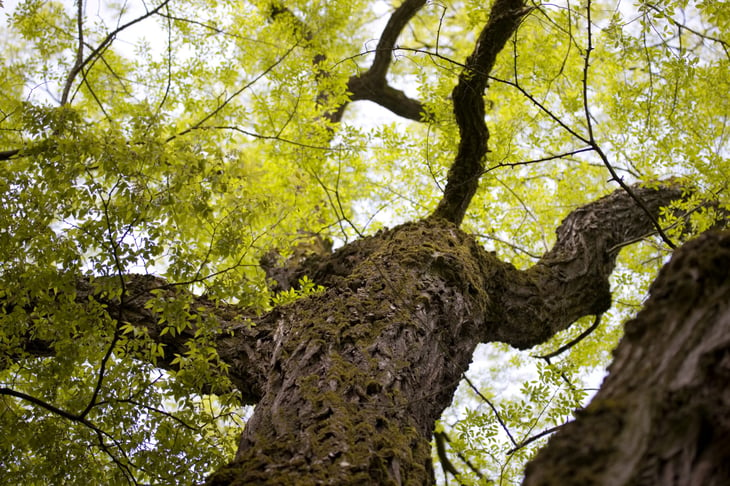
While increasingly common in landscaping, the non-native Siberian Elm is a real pest. Fast-growing and invasive, it can soon spread throughout the neighborhood and beyond.
But it’s also brittle, dropping branches and twigs at the mere suggestion of a breeze. Not only that, but it’s also highly susceptible to a myriad of bugs and diseases and won’t look pretty for long.
16. Kousa Dogwood
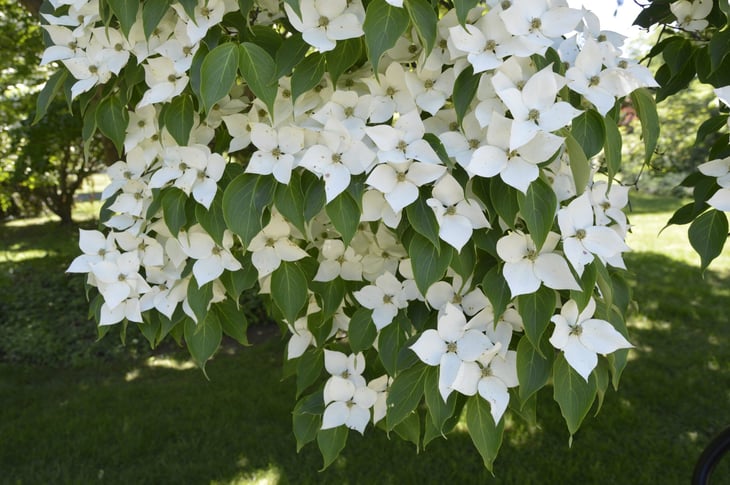
While the Kousa Dogwood looks gorgeous in fall, you might soon find that you spend more time cleaning up after it than admiring it.
The berries are an absolute nightmare, turning slimy and staining everything they come into contact with. Meanwhile, the leaves and flowers will soon start piling across your garden.
17. Callery Pear
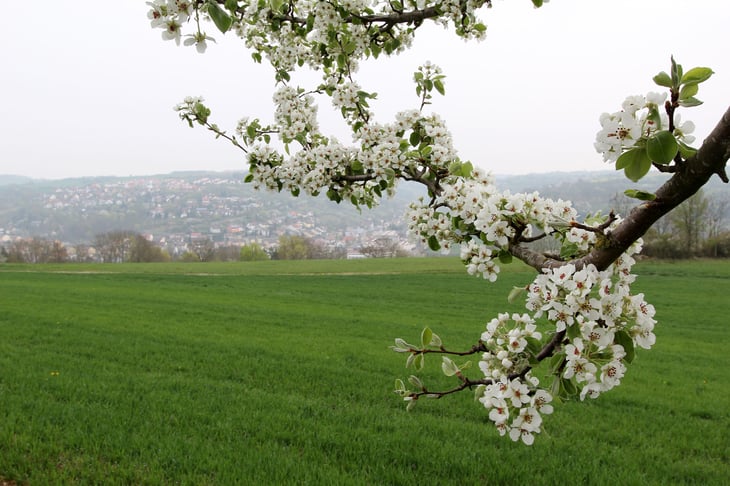
In many ways, the Callery Pear is even worse than the Bradford Pear tree. The flowers smell just as foul, and it’s also vulnerable to diseases, while their thin branches break easily.
Moreover, it spreads extremely quickly, so you’ll soon find more of these somewhat unattractive and smelly trees cropping up.
18. Linden
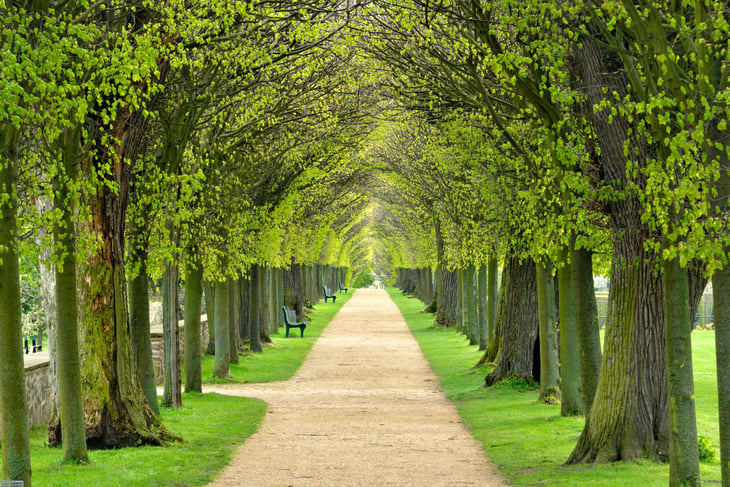
The smell of Linden flowers on an early summer evening is undoubtedly wonderful. However, the hours spent throughout the rest of summer and fall clearing the flowers and seeds from your yard aren’t so wonderful.
Linden is also popular with aphids, which, once attracted to your Linden tree, will soon spread to other plants in your yard.
Oh, and don’t park under your Linden. The sap will cover your car and driveway in a sticky mess in no time.
19. Sycamore
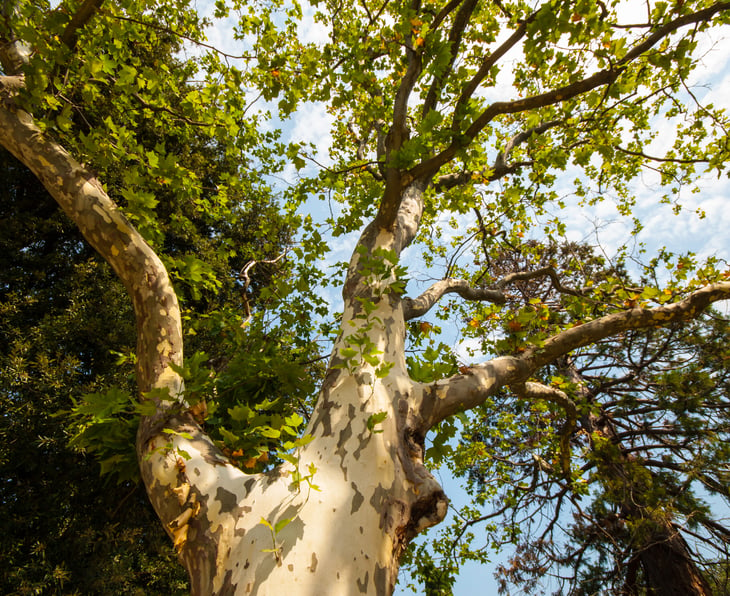
Sycamores have a lot going for them in terms of urban landscaping. Not only are they fast growers, but they’re tolerant of air pollution and easy to maintain.
However, they can be extremely messy trees to have in your backyard and the seeds and flowers will soon cover your lawn.
Also, they’re a poor choice for those with allergies as they produce large quantities of pollen.
20. Scots Pine
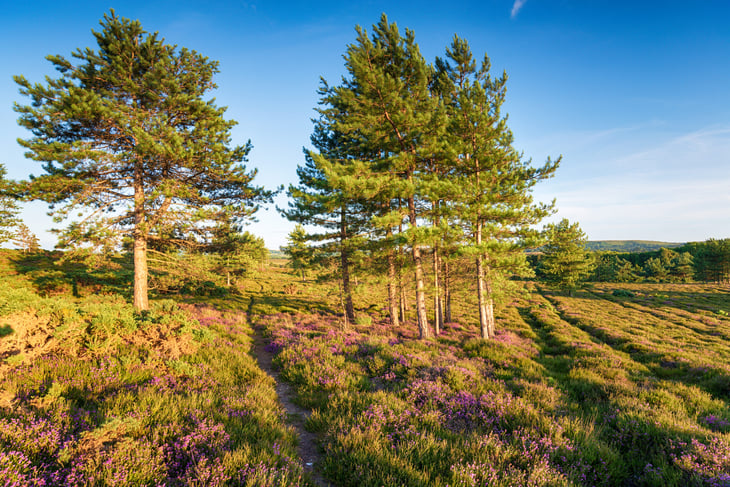
Another messy choice, the Scots Pine will leave a covering of needles and pine cones all over your yard.
Besides being messy, they’re also susceptible to pests and diseases. As a result, they have a relatively short lifespan.
Choosing the Best Trees for Your Yard

Now you know which trees not to grow, what should you add to your yard?
A good rule of thumb is to prioritize native plants, which tend to be well-suited to the local climate and are better able to resist pests and diseases.
On top of that, they tend to promote biodiversity and offer plenty of benefits to the local wildlife.






Add a Comment
Our Policy: We welcome relevant and respectful comments in order to foster healthy and informative discussions. All other comments may be removed. Comments with links are automatically held for moderation.